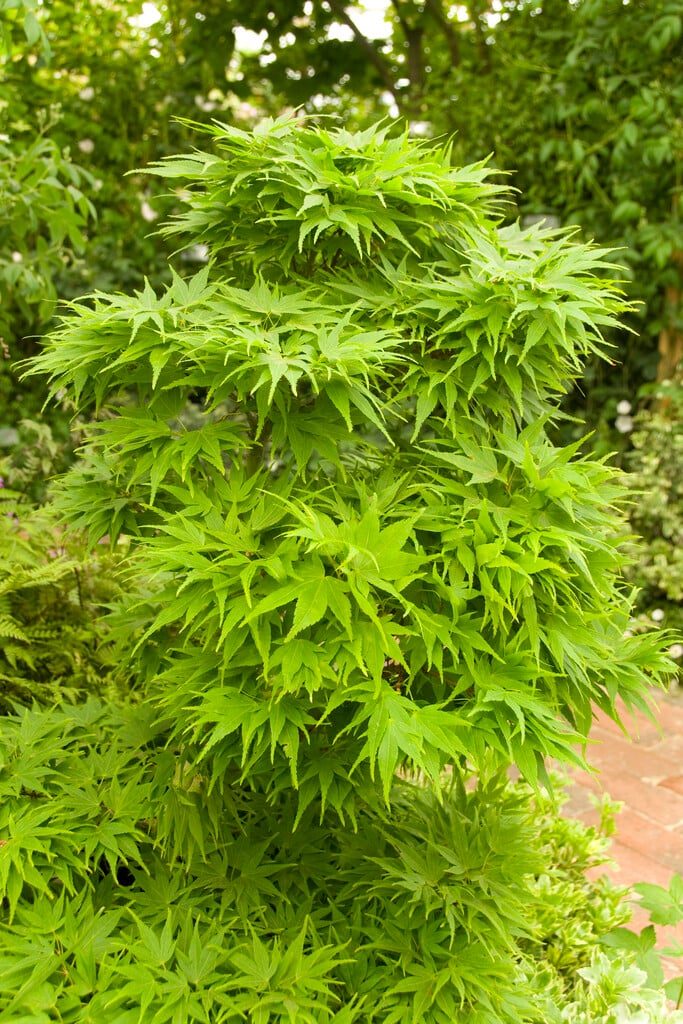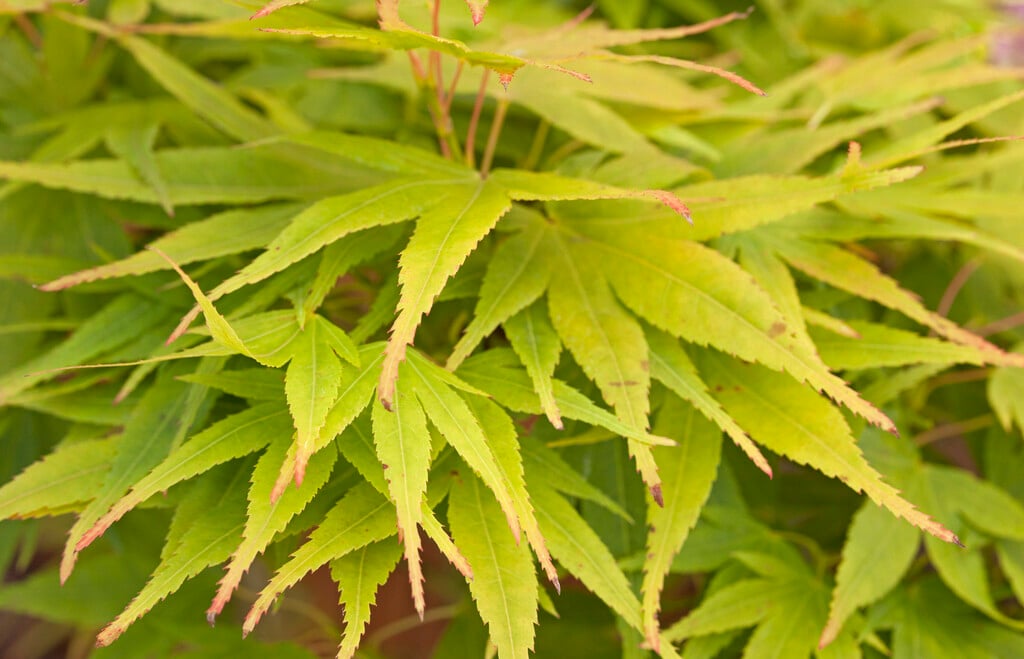Acer palmatum 'Mikawa-yatsubusa' (Dw)
Japanese maple 'Mikawa-yatsubusa'
Compact, multi-branched, small tree, growing slowly to about 1-1.2m tall. Dense, tightly overlapping 5 or 7 lobed leaves give a bunched, layered effect. Leaves open pale yellow-green in spring, maturing to bright green, then turning orange, gold and red in autumn. Inconspicuous hanging clusters of small, green flowers are followed by red-flushed, winged seeds. Green bark adds winter colour
Size
Ultimate height
1–1.5 metresTime to ultimate height
5–10 yearsUltimate spread
1–1.5 metresGrowing conditions
Moisture
Moist but well–drainedpH
Acid, Alkaline, NeutralColour & scent
| Stem | Flower | Foliage | Fruit | |
| Spring | Green | Yellow Green | ||
|---|---|---|---|---|
| Summer | Green | Green Red | ||
| Autumn | Orange Gold Red | |||
| Winter |
Position
- Full sun
- Partial shade
Aspect
East–facing or North–facing or West–facing
Exposure
Sheltered Hardiness
H5Botanical details
- Family
- Sapindaceae
- Native to GB / Ireland
- No
- Foliage
- Deciduous
- Habit
- Spreading branched
- Genus
Acer can be deciduous trees or large shrubs with paired, often palmately-lobed leaves and small flowers followed by characteristic winged fruits. Many have fine autumn colour, and some have ornamental stems
- Name status
Accepted
How to grow
Cultivation
Grow in moisture-retentive, well-drained soil in a sheltered position. Leaf colour is best in partial shade, although full sun can be tolerated if soil is reliably moist. Acer leaf scorch can be caused by lack of soil moisture or excessive exposure. Suits container cultivation but attention to watering is needed in dry spells during the growing season. Good for bonsai cultivation. See Japanese maple cultivation
Propagation
Propagate by layering in autumn, grafting in late winter or softwood cuttings
Suggested planting locations and garden types
- City and courtyard gardens
- Cottage and informal garden
- Patio and container plants
Pruning
Pruning group 1 from late autumn to midwinter only
Pests
May be susceptible to Acer gall mite, aphids, caterpillars and horse chestnut scale
Diseases
May be susceptible to Verticillium wilt, Acer leaf scorch and honey fungus
Love gardening
Sign up to receive regular gardening tips, inspiration, offers and more
View our Privacy Policy
Get involved
The Royal Horticultural Society is the UK’s leading gardening charity. We aim to enrich everyone’s life through plants, and make the UK a greener and more beautiful place.

